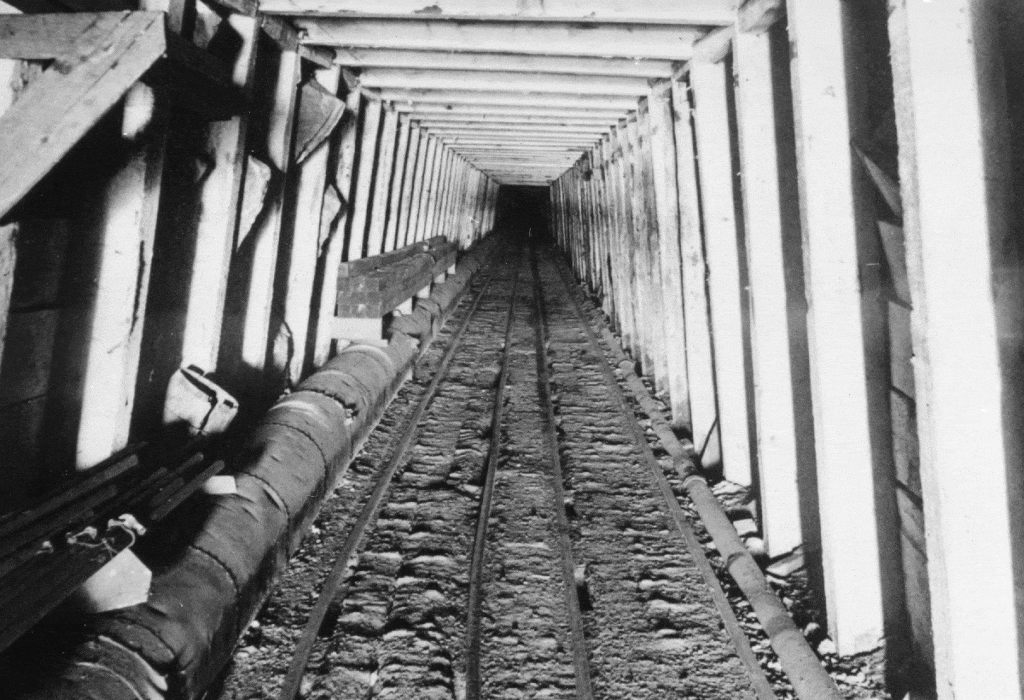This is the second of two articles on the creation of the Spiro Tunnel.
As described in part one, in late 1915 Solon Spiro’s King Con mine company announced plans to drive a 14,000-foot long development and exploration tunnel to its mine claims in Thaynes Canyon.
Work commenced on “the long bore” in May of 1916. The first task was to level the site and prepare it for the power and drilling equipment to be moved onsite, as well as a machine shop and powder house. The project was expected to take several years and to produce ore in sufficient quantities to offset costs when about half of the tunnel was completed. An October 1916 Park Record story referenced the tunnel as the “Spiro tunnel’ and that name seemed to be commonly used thereafter. The tunnel proceeded into the mountain an average of 10 feet per day.
Meanwhile, the California-Comstock property in upper Thaynes Canyon had come into play. The iconic remains of that mill are located below today’s Keystone ski run. The owners decided that a large assessment on investors was required to make the mine and mill productive and so a decision was made to sell. With its large exploration and development tunnel heading directly toward the California-Comstock property, King Con was the logical buyer. In January 1918, King Con added that property to its extensive holdings.
Progress on the tunnel was slowed during WWI, but by May 1920 the tunnel was 12,500 feet in and there were finally indications of good mineralization (as well as water). By early 1921 the water flow had increased to the extent that the three-foot by four-foot water channel in the tunnel was flooded and there was six inches of water on the track in the tunnel.

Credit: Park City Historical Society & Museum, Himes-Buck Digital Collection
In April 1921 the King Con hired a mining geologist to make an examination of its expensive tunnel project. He reported that the tunnel was 14,250 feet in from the portal and that it was one of the finest pieces of engineering and mining work done in the west. However, no significant ore bodies had yet been discovered.
By March of 1923 the King Con was looking for additional financing. The company retained the leading ore finding geologist in the world, J.M. Boutwell, to study the company’s property. He concluded the geological indications still favored the occurrence of valuable bodies of silver-lead ore.
The tunnel was eventually extended into the mountain 17,000 feet but a great prospect never developed. Finally, in May 1924, the King Con was sold to its famous neighbor, the Silver King, for $800,000. The Silver King continued development work in the tunnel and made connections to its expansive underground facilities, making it a strategic asset. But perhaps the greatest legacy of the Spiro Tunnel is the water that still drains out of the tunnel, continuously flowing by gravity, providing water to the Park City community for over 100 years.
For more information about the Spiro Tunnel, and its later use as a “skier subway”, visit the Park City Museum.